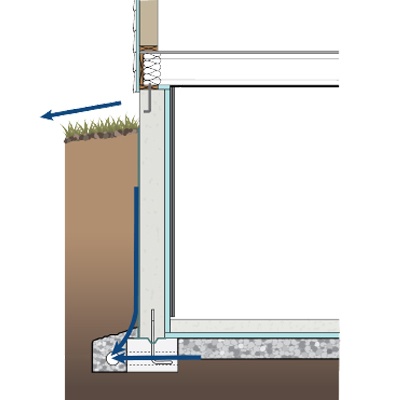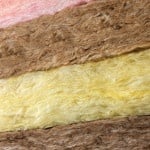Whether you’re building new construction or working on a renovation, you’ve got to think about preparing for and preventing the impact of water on the structure of the home. Because without your expertise, homes can easily have a drinking problem — and the water they absorb can be downright destructive.
Details »Insulation Institute Blog
KB Homes, a top 10 builder nationally, has firmly established itself as a leader in energy efficient building. In April of this year, it won its sixth consecutive Energy Star Partner of the Year Award. Additionally, in 2013, 2014 and 2015 it received Department of Energy Housing Innovation Awards for its Zero Energy Ready Home (ZERH) construction. With this level of success it begs the question “what are they doing?” DOE’s “Tour of Zero” website has detailed case studies on a number of homes (which we have written about before), including those from KB, but we will look specifically at the approach they took to insulation and air sealing in these homes, as well as the resulting ACH levels and HERS scores.
Details »Images like this one are beautiful to me. Maybe it is my many years in the mineral (glass or rock based) fiber products industry, but when I see these products I find them beautiful. I know some see an old product, one they don’t think has changed much over time, but I see an ageless beauty that for over 80 years has been a sustainable choice for insulating our homes and businesses. Its sustainable qualities are numerous, but here are my top 6:
Details »Net-Zero Energy vs. Zero Energy Ready Homes
Not all net-zero energy (NZE) homes are created equal, well, they aren’t all built the same that is. Also, slight differences in wording can mean different things. Did you know that there are net-zero energy homes and Department of Energy (DOE) Zero Energy Ready Homes (ZERH). What’s the difference? DOE defines a net-zero energy, or “zero energy,” building as “an energy-efficient building where, on a source energy basis, the actual annual delivered energy is less than or equal to the on-site renewable exported energy.” [1] And a Zero Energy Ready home is “a high performance home which is so energy efficient, that a renewable energy system can offset all or most of its annual energy consumption.”[2] So, a ZERH is a building that has maximized its energy efficiency and has the potential to be a NZE home if renewable energy sources are added. Those are the definitions, but how they are built, and what products are used, to meet those standards, is up to the builder.
Details »There’s no question that the quality of the insulation installation has a tremendous impact on the comfort of a home. With temperatures dipping across the country and fall weatherization on the minds of many homeowners, insulation contractors are likely seeing an uptick in interest from consumers in adding insulation to their homes — particularly with news that roughly 90% of U.S. homes are under insulated. As homeowners look to hire qualified professionals to complete the job, the skills of the workers installing the insulation will have significant impact on its performance — and ultimately on the comfort of the home. Therefore, encouraging installer excellence is a worthy goal, particularly if done in a fun, competitive way.
Details »New emissions rules for Wool Fiberglass and Mineral Wool product facilities
The U.S. Environmental Protection Agency (“EPA”) has signed the Final Rules for the Wool Fiberglass Manufacturing and Mineral Wool Production MACT Standards (“Final Rules” or “Rules”), and the Rules have been published in the Federal Register (80 Fed. Reg. 45,279 (July 29, 2015)). The Final Rules represent a significant success for NAIMA and its members. Because of the tremendous effort of NAIMA and its members – responding to multiple information requests and EPA proposals, participating in many in-person meetings with EPA staff and management, and arranging numerous EPA site visits to many facilities – EPA ultimately issued feasible rules.
Details »Standardized Methods Needed to Assess Potential Impacts of Spray Foam Insulation Products
Spray foam (SPF) insulation manufacturers, regulatory agencies, indoor air quality professionals, testing labs, air quality consultants, instrument vendors, and other stakeholders met in California on April 30 – May 1, 2015 to address the potential impacts of SPF insulation products on indoor air quality and to establish re-entry or re-occupancy times after product installation in a building and post-occupancy ventilation needs.
Details »This fall the EPA’s ENERGY STAR program will launch its second annual “Rule Your Attic” Campaign to increase homeowners’ awareness of the financial, comfort, and environmental benefits of adequately sealing and insulating their homes. Through this campaign Energy Star hopes that homeowners become knowledgeable of their home’s energy use and take corrective actions either themselves, or by working with a contractor, to increase their home’s insulation.
Details »While the idea of a super-insulated, high-performance house began in North America in response to the 1973 energy crisis, interest in this concept declined in the United States and Canada in the following decades.[1] Subsequently, the concept picked up steam in the early 1900s and developed into Passivehaus in Germany. Passivehaus was designed to emphasize low energy use, health, comfort and resilient construction in a German climate, so when the concept regained popularity in the U.S. in the early 2000’s the German Passivehaus standards did not consider the multiple and varying climate zones of North America.
Details »Insulation Marketing: Regulations That Guide Conduct
As the fall re-insulation season approaches, many companies will begin to focus more effort on marketing directly to homeowners. As this occurs, it is important to ensure that all marketing conforms to the various federal guidelines and regulations, which impact not only insulation but many consumer products.
Details »


